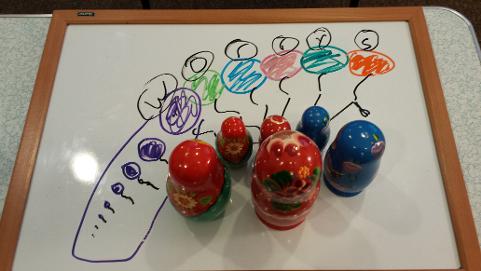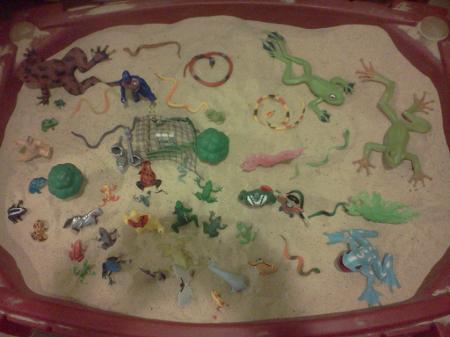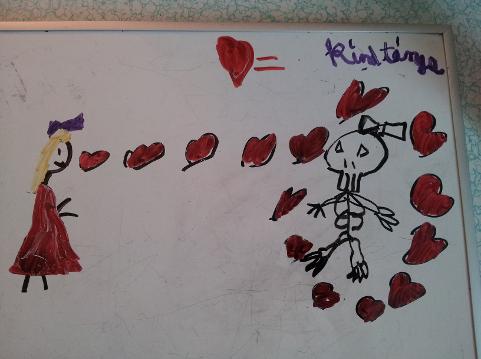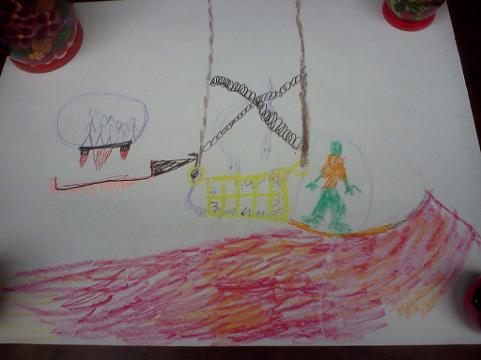SQUIGGLES STORIES
Squiggles is an interactive client-therapist technique developed by Winicott. Combined with story telling, it becomes a projective technique.Many clients use Squiggles to draw a picture and tell a story that offers insight as to what the person has experienced and his / her reactions and emotions related to that experience. The picture below was developed by an 8-year-old sex abuse victim at the end of treatment. When asked to tell a story about her drawing, she told an elaborate tale. In her story, she "conquered" the blood-thirsty bats with the help of a friend who had "great magic." In her story the vampire bats had pulled all the legs off a centipede who had been lured into their cave. The centipede and her friend outsmarted the bats, restored the legs, and stopped the abuse (the blood in the pond is that of previous victims). See Case Example inUsing Stories, Art and Play in Trauma-Focused Treatment: Case Examples and Applications Across the Lifespan (Pernicano, 2018)
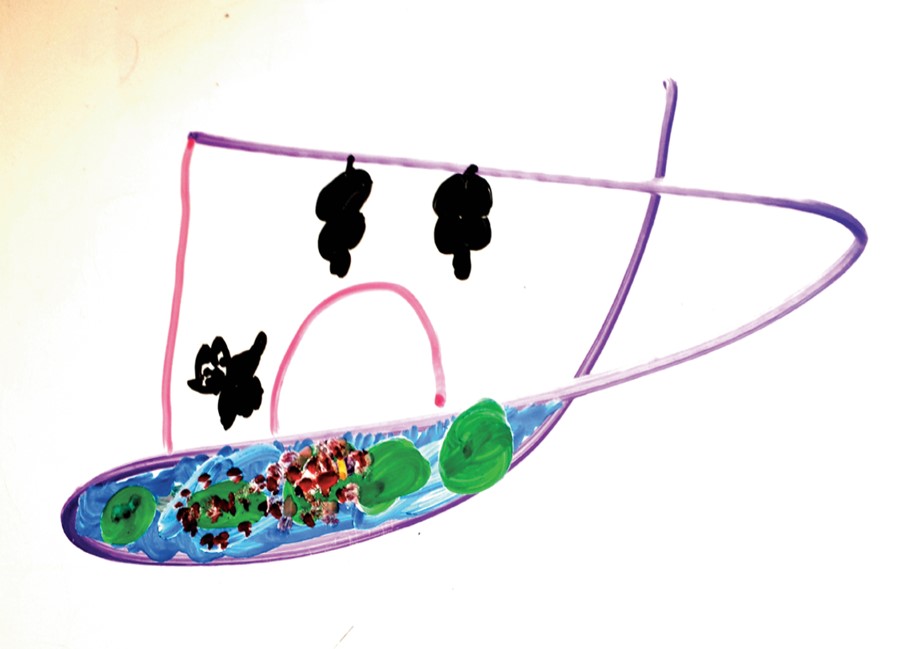
Cracked Glass Bowl
Following are pre-post depictions of the child's cracked glass bowl. She added a friend to "help" the first bowl after the trauma. As treatment ended, she drew the new creation, saying it had "put the pieces back together" and was happy. The friend had stayed to provide support. It is easy to see changes in color, size and emotional tone that paralleled changes in the child’s self perception and behavior.
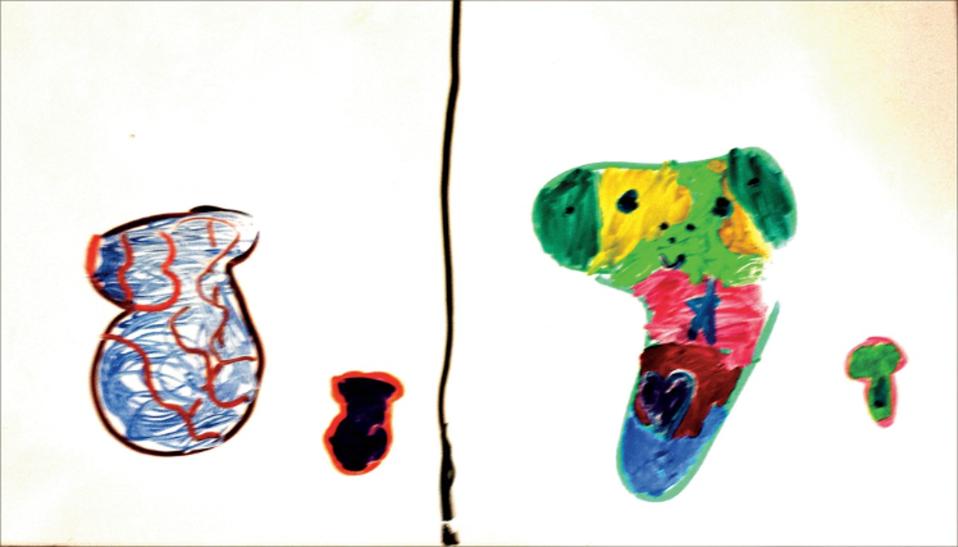
The Cracked Glass Bowl
Veteran Depictions of Trauma
Veterans in treatment for PTSD and moral injury (MI) (symptoms of guilt, remorse, and self-judgment) created the following bowls to depict their trauma/pain and to describe perceived changes in themselves due to military-related events. Drawing the bowls allows them to "anchor" the traumatic events and discuss them with less avoidance.
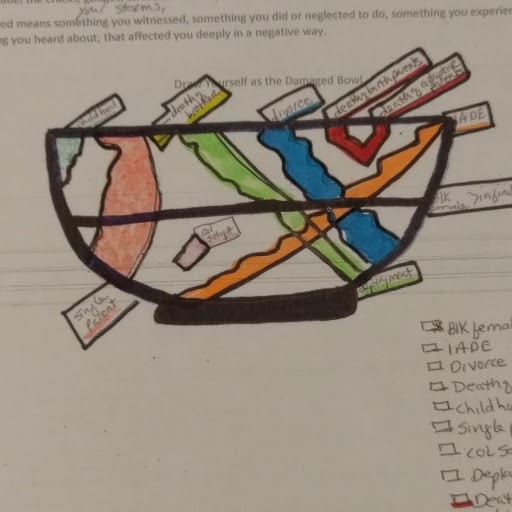
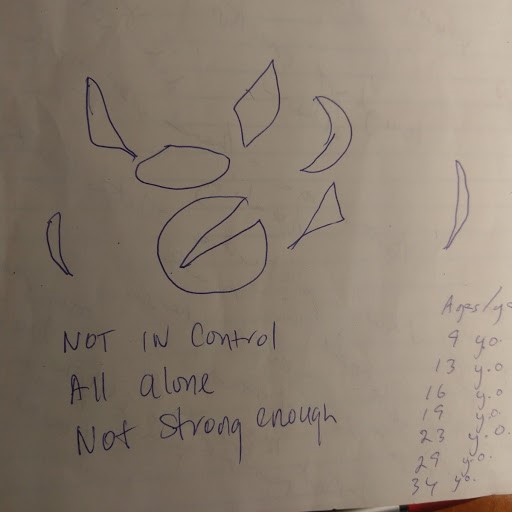
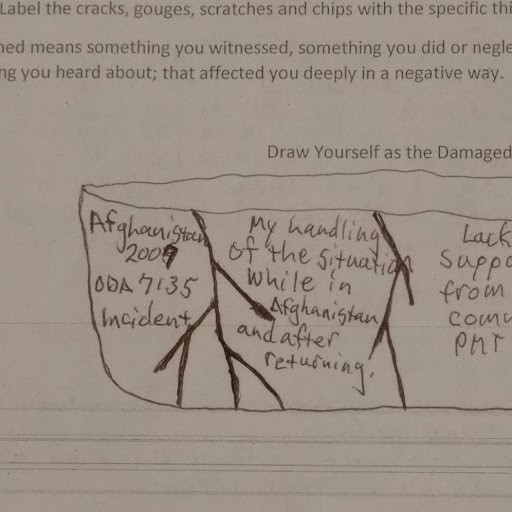
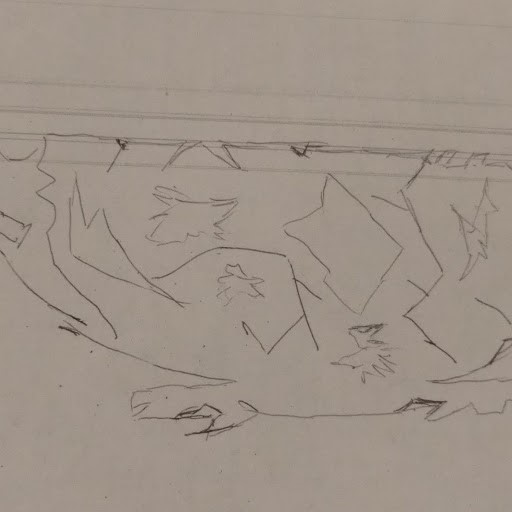
Veteran Depiction of Change as a Result of Treatment for Moral Injury
Veterans went through a 10-week group program and they depicted change by drawing "self" as a "cracked glass bowl" and then as a "restored" bowl with hope and healing. Following is an example of the beautiful work done by these veterans.
The first drawing is of a cracked vase and the cracks are spreading into the table below, his "supports." The vase has "no purpose or function" and there is fire surrounding it, "no one can get in." Inside the vase, he is in the water "trying to surf the waves and stay alive."
The second drawing is of a teacup, and there is steam rising off the cup. His hand is holding the cup, representing self-comfort, and the cracks have sealed. It is a "work in progress" and the teacup has a function and a purpose.
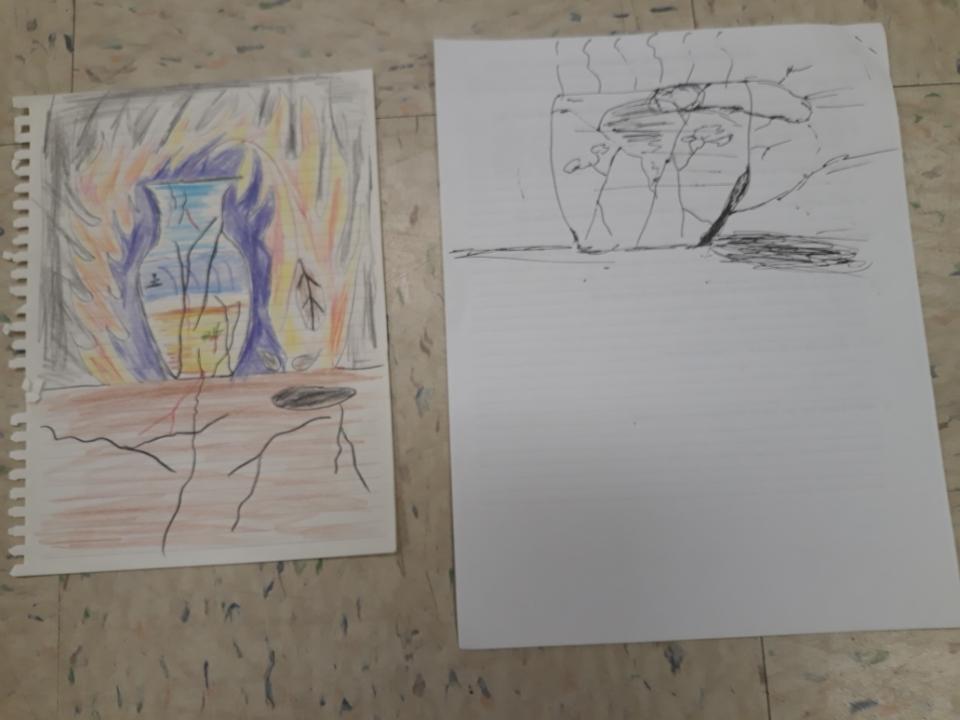
Therapy Interventions: Following are client depictions of worrying (directly below), therapist-client relationship (right), trauma (bottom left), and perpetrator (bottom right).
